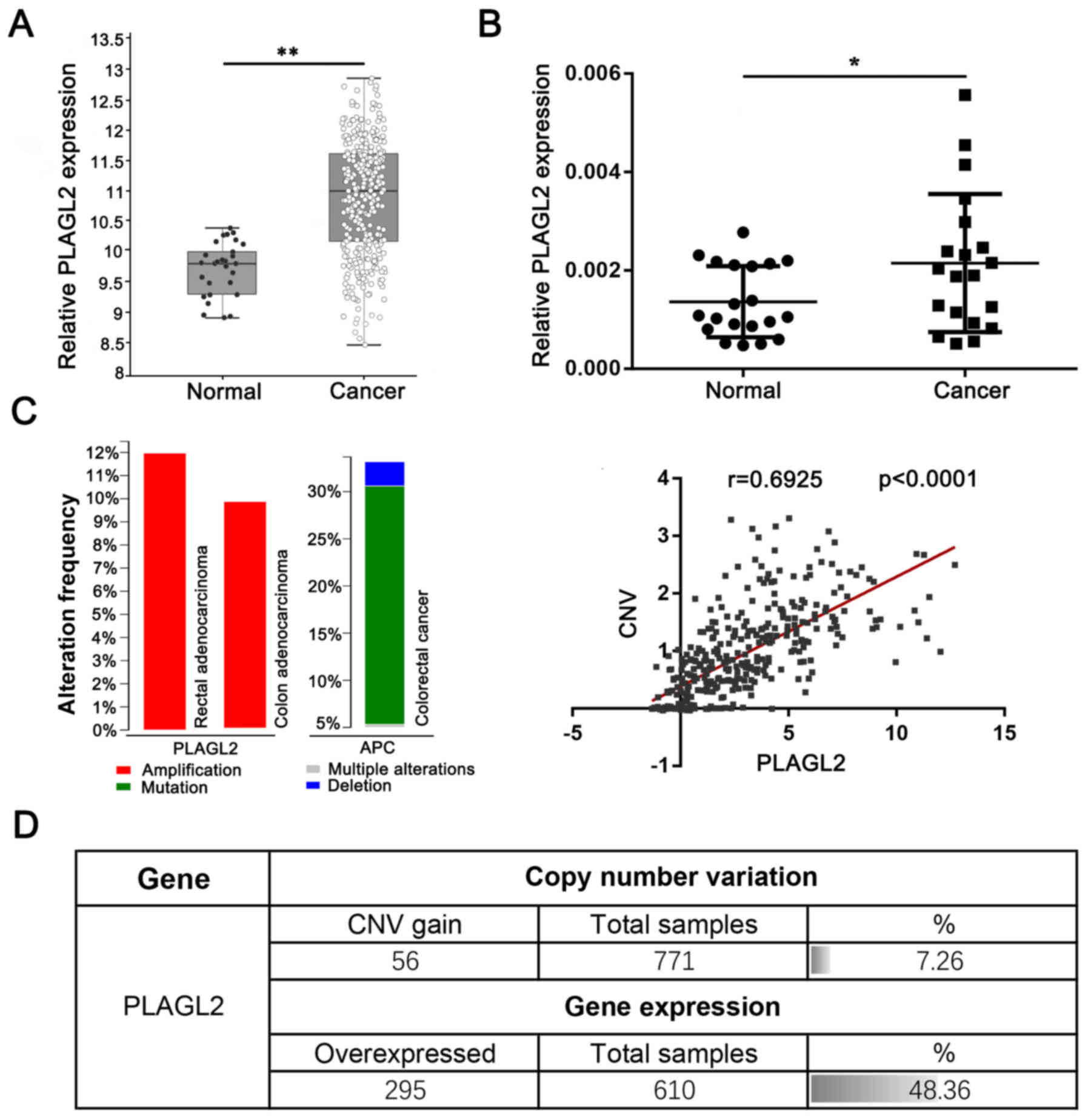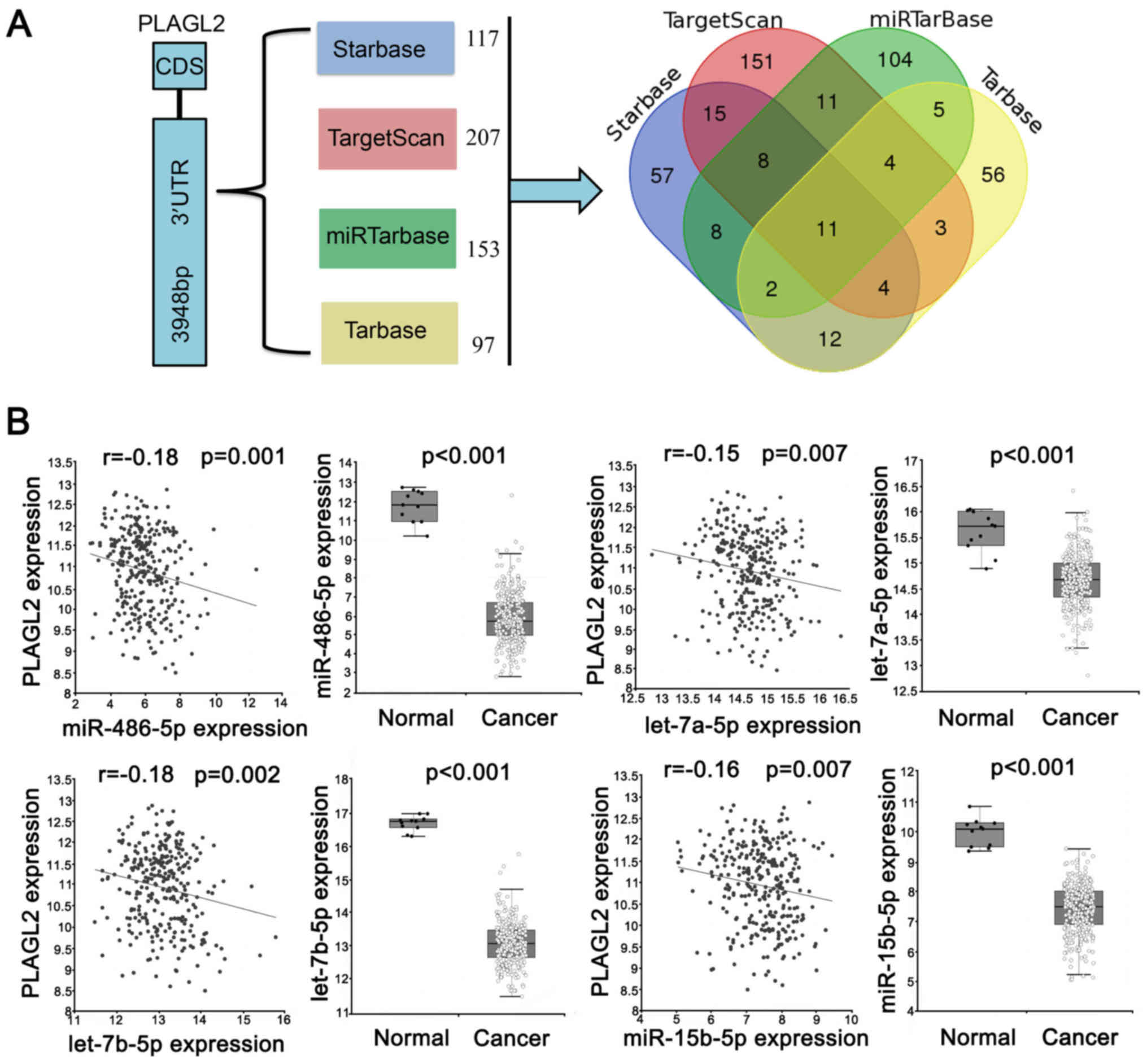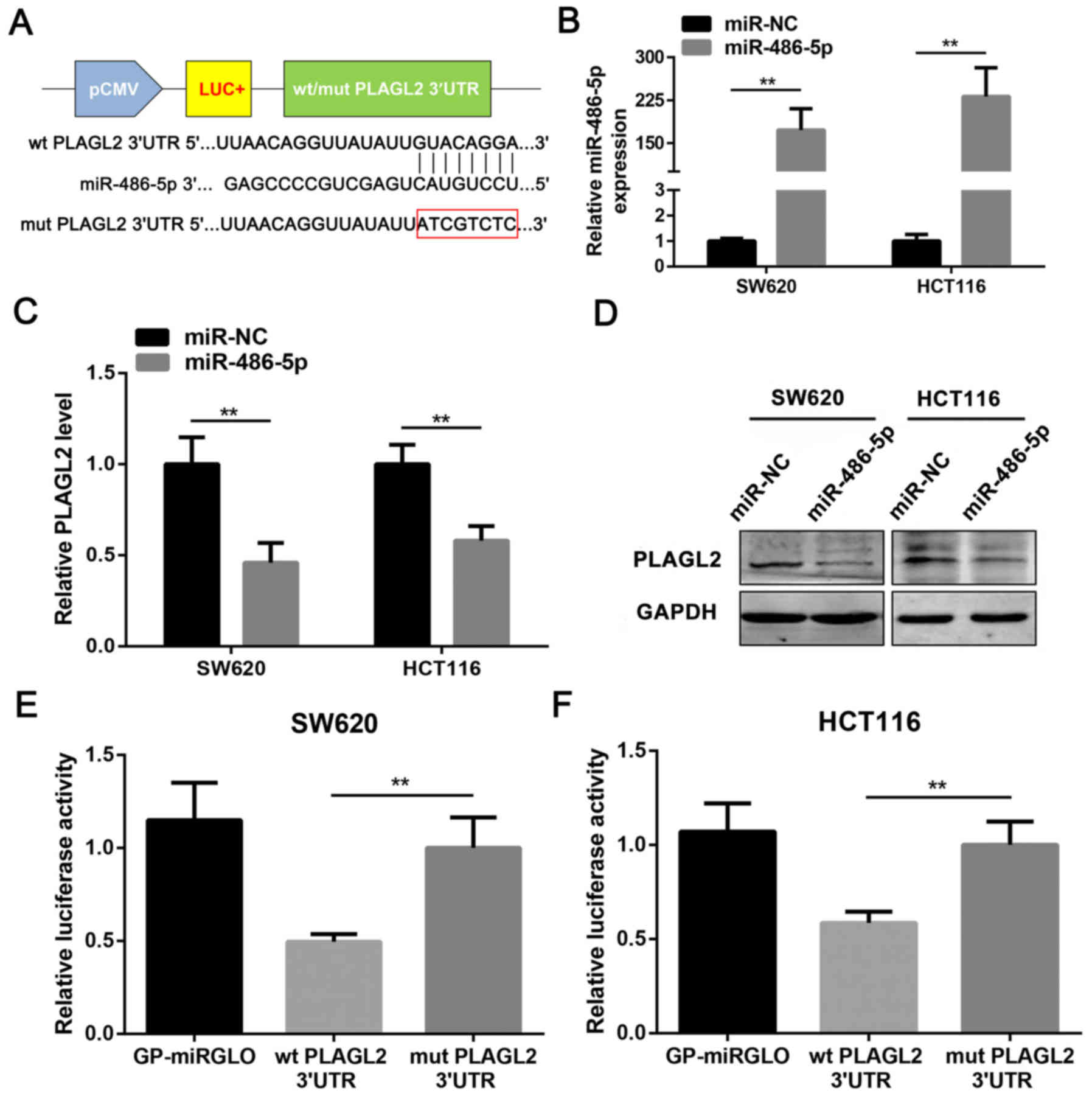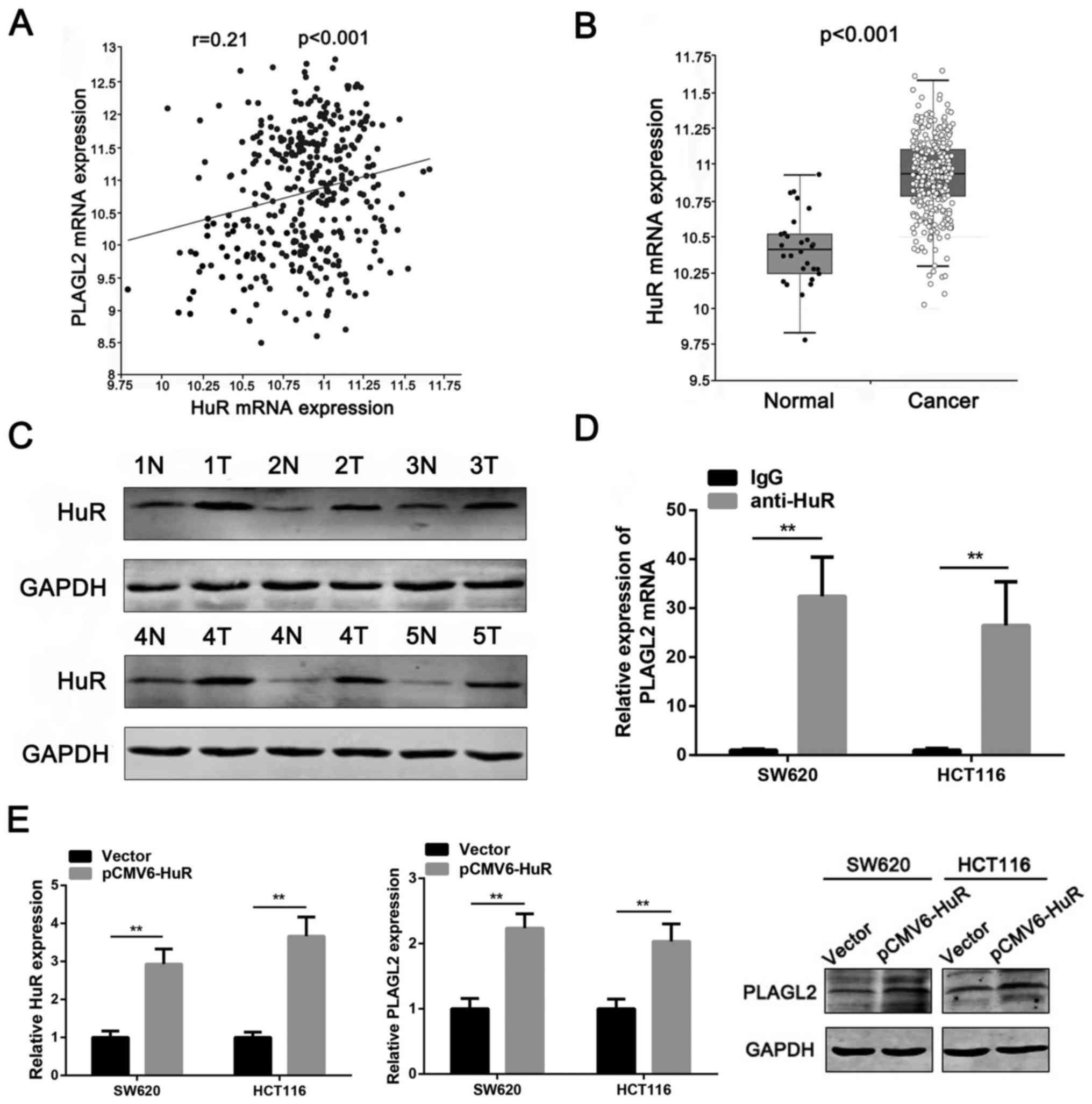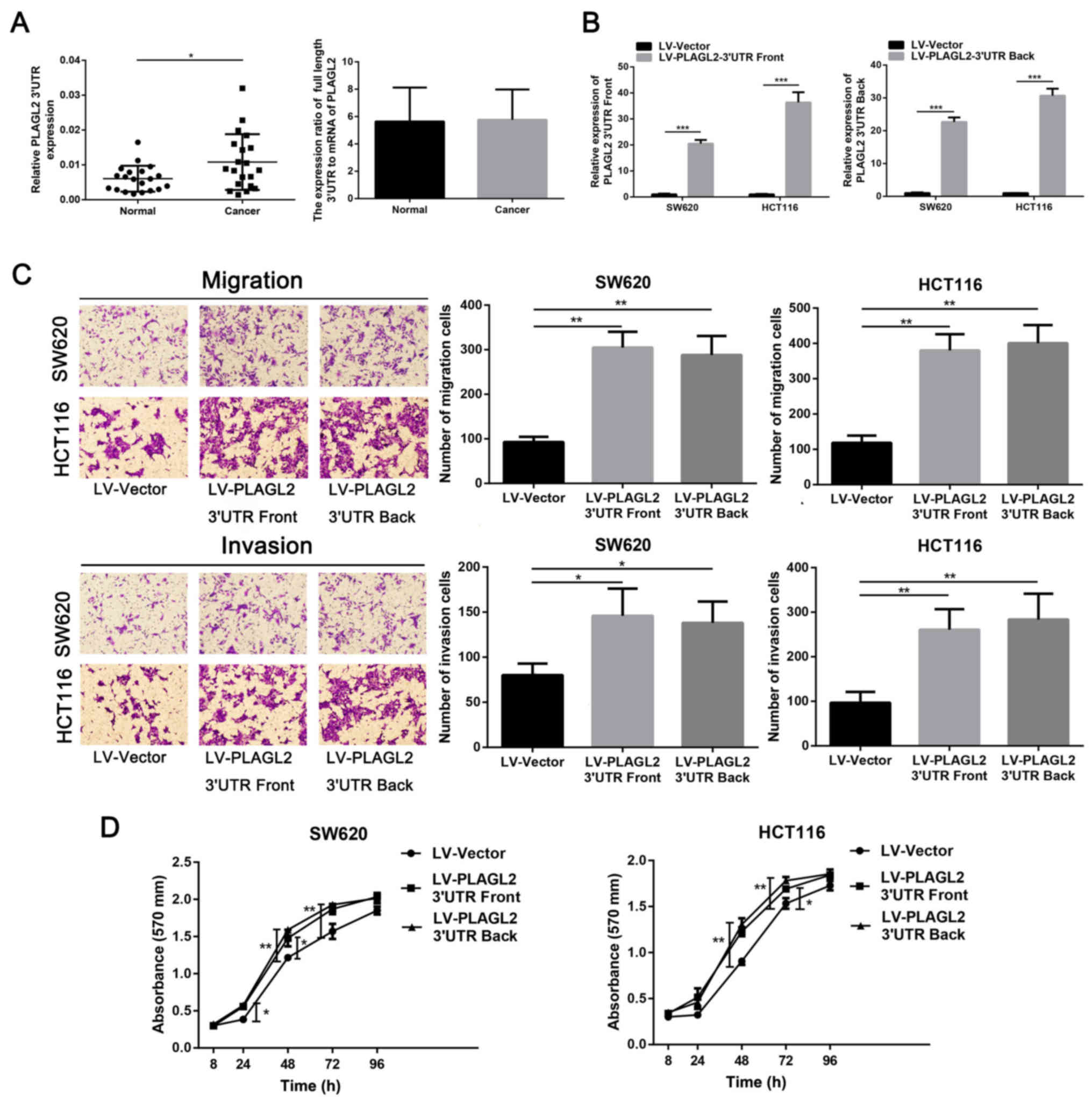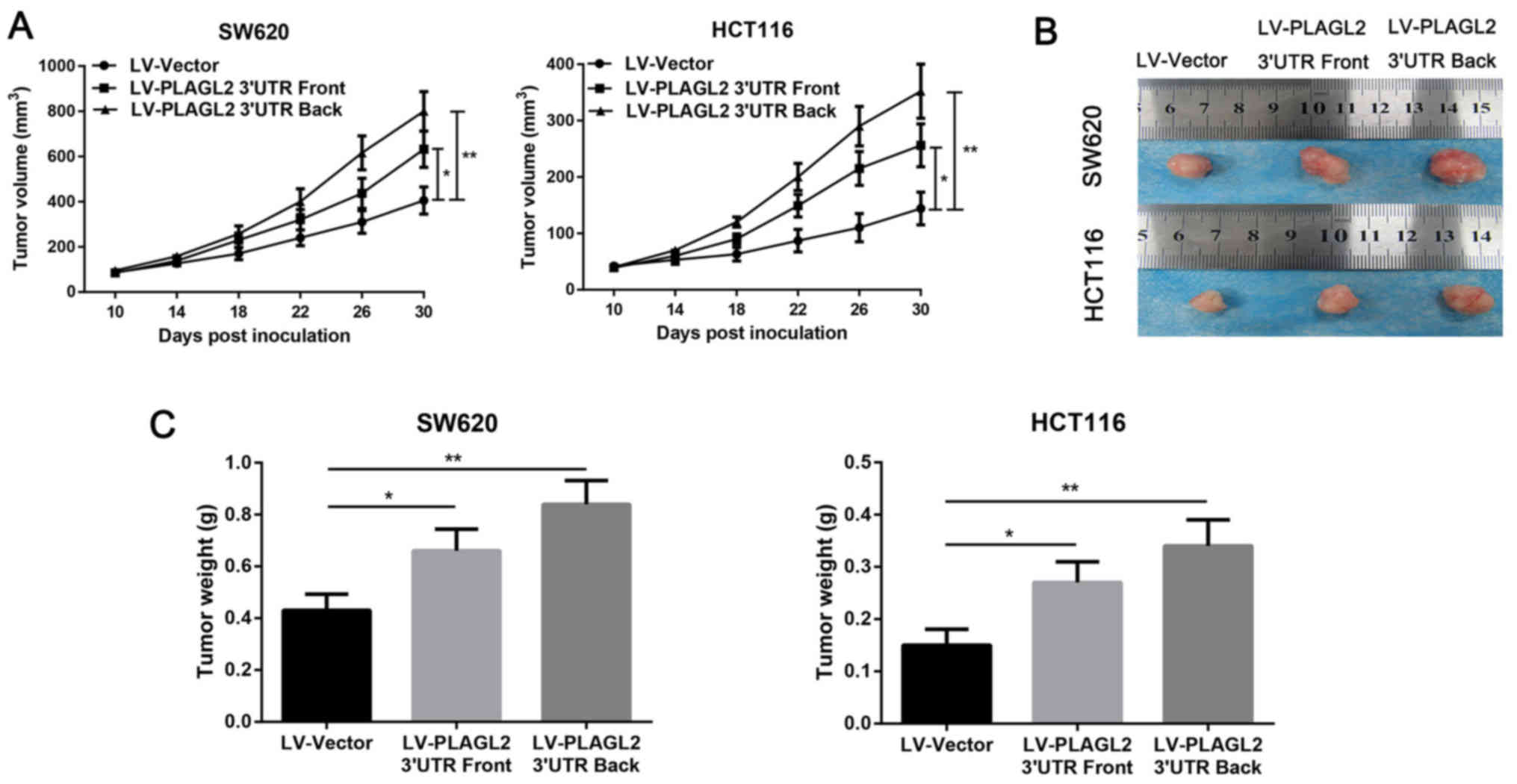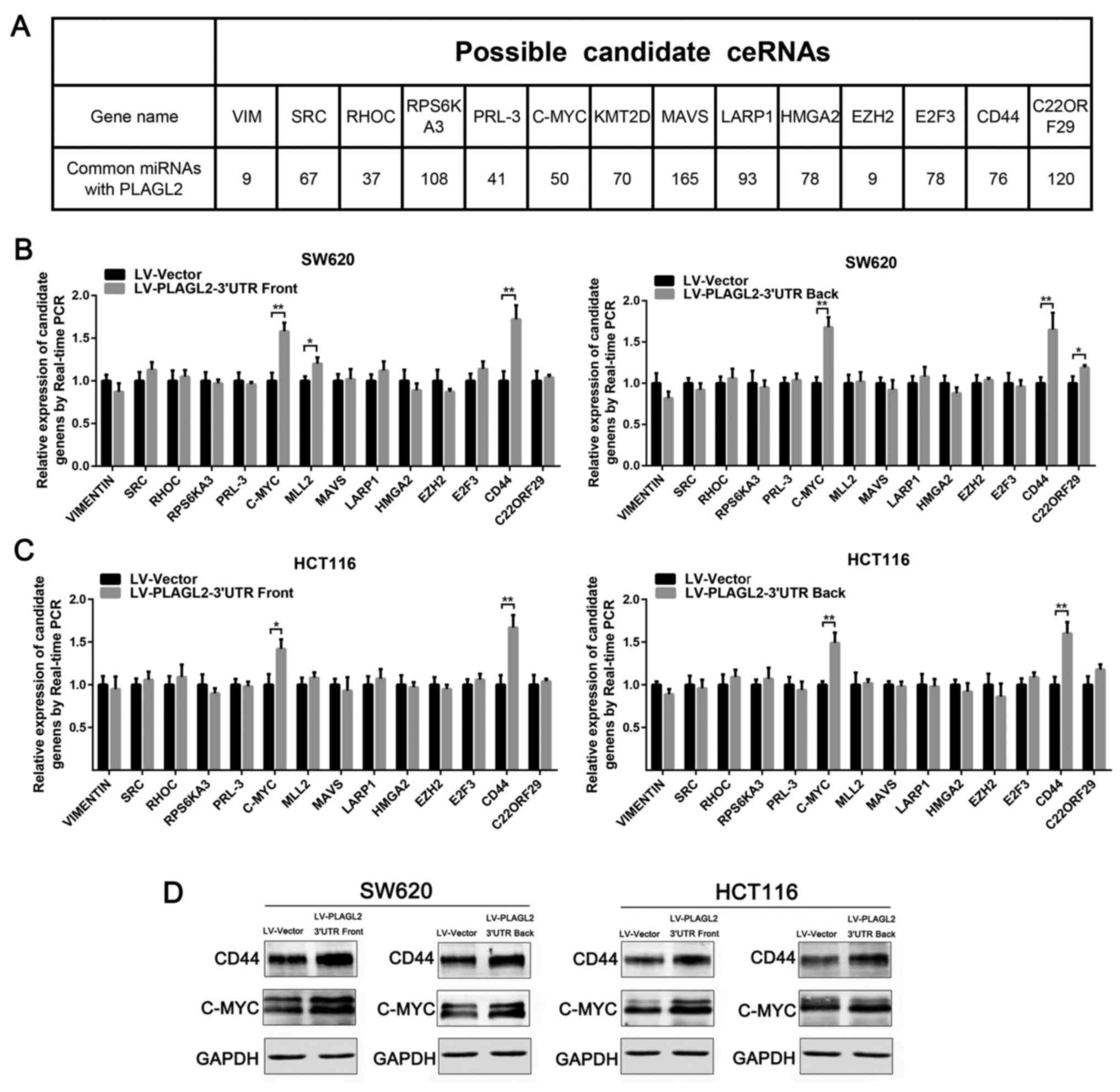|
1
|
Wezensky SJ, Hanks TS, Wilkison MJ, Ammons
MC, Siemsen DW and Gauss KA: Modulation of LAGL2 trans-activation
by positive cofactor 2 (C2), a component of the ARC/Mediator
complex. Gene. 452:22–34. 2010. View Article : Google Scholar
|
|
2
|
Kas K, Voz ML, Hensen K, Meyen E and Van
de Ven WJ: Transcriptional activation capacity of the novel PLAG
family of zinc finger proteins. J Biol Chem. 273:23026–23032. 1998.
View Article : Google Scholar : PubMed/NCBI
|
|
3
|
Furukawa T, Adachi Y, Fujisawa J, Kambe T,
Yamaguchi-Iwai Y, Sasaki R, Kuwahara J, Ikehara S, Tokunaga R and
Taketani S: Involvement of LAGL2 in activation of iron deficient-
and hypoxia-induced gene expression in mouse cell lines. Oncogene.
20:4718–4727. 2001. View Article : Google Scholar : PubMed/NCBI
|
|
4
|
Van Dyck F, Declercq J, Braem CV and Van
de Ven WJ: LAG1 the prototype of the PLAG gene family: Versatility
in tumour development (Review). Int J Oncol. 30:765–774.
2007.PubMed/NCBI
|
|
5
|
Hanks TS and Gauss KA: Pleomorphic adenoma
gene-like 2 regulates expression of the p53 family member, p73 and
induces cell cycle block and apoptosis in human promonocytic U937
cells. Apoptosis. 17:236–247. 2012. View Article : Google Scholar
|
|
6
|
Zheng H, Ying H, Wiedemeyer R, Yan H,
Quayle SN, Ivanova EV, Paik JH, Zhang H, Xiao Y, Perry SR, et al:
LAGL2 regulates Wnt signaling to impede differentiation in neural
stem cells and gliomas. Cancer Cell. 17:497–509. 2010. View Article : Google Scholar : PubMed/NCBI
|
|
7
|
Landrette SF, Kuo YH, Hensen K, Barjesteh
van Waalwijk van Doorn-Khosrovani S, Perrat PN, Van de Ven WJ,
Delwel R and Castilla LH: Plag1 and Plagl2 are oncogenes that
induce acute myeloid leukemia in cooperation with Cbfb-MYH11.
Blood. 105:2900–2907. 2005. View Article : Google Scholar
|
|
8
|
Yang YS, Yang MC and Weissler JC:
Pleiomorphic adenoma gene-like 2 expression is associated with the
development of lung adenocarcinoma and emphysema. Lung Cancer.
74:12–24. 2011. View Article : Google Scholar : PubMed/NCBI
|
|
9
|
Liu B, Lu C, Song YX, Gao P, Sun JX, Chen
XW, Wang MX, Dong YL, Xu HM and Wang ZN: The role of pleomorphic
adenoma gene-like 2 in gastrointestinal cancer development,
progression, and prognosis. Int J Clin Exp Pathol. 7:3089–3100.
2014.PubMed/NCBI
|
|
10
|
Wang YP, Guo PT, Zhu Z, Zhang H, Xu Y,
Chen YZ, Liu F and Ma SP: Pleomorphic adenoma gene like-2 induces
epithelial-mesenchymal transition via Wnt/β-catenin signaling
pathway in human colorectal adenocarcinoma. Oncol Rep.
37:1961–1970. 2017. View Article : Google Scholar : PubMed/NCBI
|
|
11
|
Li DJ, Lin CW, Chen M, Li NP, Du YH, Su C,
Yang CX, Gong N, Wu H, Wu RL, et al: Comprehensive bioinformatics
analysis of the characterization and determination underlying
mechanisms of over-expression and co-expression of genes residing
on 20q in colorectal cancer. Oncotarget. 8:78642–78659.
2017.PubMed/NCBI
|
|
12
|
Liang L, Fang JY and Xu J: Gastric cancer
and gene copy number variation: Emerging cancer drivers for
targeted therapy. Oncogene. 35:1475–1482. 2016. View Article : Google Scholar
|
|
13
|
Yang Z, Zhuan B, Yan Y, Jiang S and Wang
T: Integrated analyses of copy number variations and gene
differential expression in lung squamous-cell carcinoma. Biol Res.
48:472015. View Article : Google Scholar : PubMed/NCBI
|
|
14
|
Mercer TR, Wilhelm D, Dinger ME, Soldà G,
Korbie DJ, Glazov EA, Truong V, Schwenke M, Simons C, Matthaei KI,
et al: Expression of distinct RNAs from 3′ untranslated regions.
Nucleic Acids Res. 39:2393–2403. 2011. View Article : Google Scholar
|
|
15
|
Rutnam ZJ and Yang BB: The non-coding 3′
UTR of CD44 induces metastasis by regulating extracellular matrix
functions. J Cell Sci. 125:2075–2085. 2012. View Article : Google Scholar : PubMed/NCBI
|
|
16
|
Fang L, Du WW, Yang X, Chen K, Ghanekar A,
Levy G, Yang W, Yee AJ, Lu WY, Xuan JW, et al: Versican
3′-untranslated region (3′-UTR) functions as a ceRNA in inducing
the development of hepatocellular carcinoma by regulating miRNA
activity. FASEB J. 27:907–919. 2013. View Article : Google Scholar
|
|
17
|
Lewis BP, Burge CB and Bartel DP:
Conserved seed pairing, often flanked by adenosines, indicates that
thousands of human genes are microRNA targets. Cell. 120:15–20.
2005. View Article : Google Scholar : PubMed/NCBI
|
|
18
|
Bartel DP: MicroRNAs: Target recognition
and regulatory functions. Cell. 136:215–233. 2009. View Article : Google Scholar : PubMed/NCBI
|
|
19
|
Chen K and Rajewsky N: The evolution of
gene regulation by transcription factors and microRNAs. Nat Rev
Genet. 8:93–103. 2007. View Article : Google Scholar
|
|
20
|
Liu C, Li M, Hu Y, Shi N, Yu H, Liu H and
Lian H: miR-486-5p attenuates tumor growth and lymphangiogenesis by
targeting neuropilin-2 in colorectal carcinoma. Onco Targets Ther.
9:2865–2871. 2016.PubMed/NCBI
|
|
21
|
Lebedeva S, Jens M, Theil K, Schwanhäusser
B, Selbach M, Landthaler M and Rajewsky N: Transcriptome-wide
analysis of regulatory interactions of the RNA-binding protein HuR.
Mol Cell. 43:340–352. 2011. View Article : Google Scholar : PubMed/NCBI
|
|
22
|
Brennan CM and Steitz JA: HuR and mRNA
stability. Cell Mol Life Sci. 58:266–277. 2001. View Article : Google Scholar
|
|
23
|
Abdelmohsen K and Gorospe M:
Posttranscriptional regulation of cancer traits by HuR. Wiley
Interdiscip Rev RNA. 1:214–229. 2010. View
Article : Google Scholar
|
|
24
|
Kotta-Loizou I, Giaginis C and Theocharis
S: Clinical significance of HuR expression in human malignancy. Med
Oncol. 31:1612014. View Article : Google Scholar : PubMed/NCBI
|
|
25
|
Scherer SW, Lee C, Birney E, Altshuler DM,
Eichler EE, Carter NP, Hurles ME and Feuk L: Challenges and
standards in integrating surveys of structural variation. Nat
Genet. 39(Suppl 7): S7–S15. 2007. View
Article : Google Scholar : PubMed/NCBI
|
|
26
|
Shi J, Yao D, Liu W, Wang N, Lv H, Zhang
G, Ji M, Xu L, He N, Shi B, et al: Highly frequent PIK3CA
amplification is associated with poor prognosis in gastric cancer.
BMC Cancer. 12:502012. View Article : Google Scholar : PubMed/NCBI
|
|
27
|
de Souza CR, Leal MF, Calcagno DQ, Costa
Sozinho EK, Borges BN, Montenegro RC, Dos Santos AK, Dos Santos SE,
Ribeiro HF, Assumpção PP, et al: MYC deregulation in gastric cancer
and its clinicopathological implications. PLoS One. 8:e644202013.
View Article : Google Scholar : PubMed/NCBI
|
|
28
|
Camps J, Nguyen QT, Padilla-Nash HM,
Knutsen T, McNeil NE, Wangsa D, Hummon AB, Grade M, Ried T and
Difilippantonio MJ: Integrative genomics reveals mechanisms of copy
number alterations responsible for transcriptional deregulation in
colorectal cancer. Genes Chromosomes Cancer. 48:1002–1017. 2009.
View Article : Google Scholar : PubMed/NCBI
|
|
29
|
Tanenbaum DG, Hall WA, Colbert LE, Bastien
AJ, Brat DJ, Kong J, Kim S, Dwivedi B, Kowalski J, Landry JC, et
al: TNFRSF10C copy number variation is associated with metastatic
colorectal cancer. J Gastrointest Oncol. 7:306–314. 2016.
View Article : Google Scholar : PubMed/NCBI
|
|
30
|
Kuersten S and Goodwin EB: The power of
the 3′ UTR: Translational control and development. Nat Rev Genet.
4:626–637. 2003. View Article : Google Scholar : PubMed/NCBI
|
|
31
|
Zhang X, Zhang T, Yang K, Zhang M and Wang
K: miR-486-5p suppresses prostate cancer metastasis by targeting
Snail and regulating epithelial-mesenchymal transition. Onco
Targets Ther. 9:6909–6914. 2016. View Article : Google Scholar : PubMed/NCBI
|
|
32
|
Wang J, Tian X, Han R, Zhang X, Wang X,
Shen H, Xue L, Liu Y, Yan X, Shen J, et al: Downregulation of
miR-486-5p contributes to tumor progression and metastasis by
targeting protumorigenic ARHGAP5 in lung cancer. Oncogene.
33:1181–1189. 2014. View Article : Google Scholar :
|
|
33
|
Youness RA, El-Tayebi HM, Assal RA, Hosny
K, Esmat G and Abdelaziz AI: MicroRNA-486-5p enhances
hepatocellular carcinoma tumor suppression through repression of
IGF-1R and its downstream mTOR, STAT3 and c-Myc. Oncol Lett.
12:2567–2573. 2016. View Article : Google Scholar : PubMed/NCBI
|
|
34
|
Chai Y, Liu J, Zhang Z and Liu L:
HuR-regulated lncRNA NEAT1 stability in tumorigenesis and
progression of ovarian cancer. Cancer Med. 5:1588–1598. 2016.
View Article : Google Scholar : PubMed/NCBI
|
|
35
|
Zhang Z, Huang A, Zhang A and Zhou C: HuR
promotes breast cancer cell proliferation and survival via binding
to CDK3 mRNA. Biomed Pharmacother. 91:788–795. 2017. View Article : Google Scholar : PubMed/NCBI
|
|
36
|
Li J and Lu X: The emerging roles of 3′
untranslated regions in cancer. Cancer Lett. 337:22–25. 2013.
View Article : Google Scholar : PubMed/NCBI
|
|
37
|
Wu Q, Yan H, Tao SQ, Wang XN, Mou L, Chen
P, Cheng XW, Wu WY and Wu ZS: XIAP 3′-untranslated region as a
ceRNA promotes FSCN1 function in inducing the progression of breast
cancer by binding endogenous miR-29a-5p. Oncotarget. 8:16784–16800.
2017.PubMed/NCBI
|
|
38
|
Garte SJ: The c-myc oncogene in tumor
progression. Crit Rev Oncog. 4:435–449. 1993.PubMed/NCBI
|
|
39
|
Du L, Wang H, He L, Zhang J, Ni B, Wang X,
Jin H, Cahuzac N, Mehrpour M, Lu Y, et al: CD44 is of functional
importance for colorectal cancer stem cells. Clinical cancer
research: an official journal of the American Association for
Cancer Research. 14:6751–6760. 2008. View Article : Google Scholar
|















